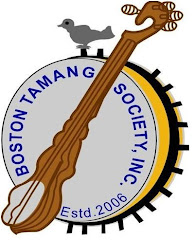The TAMANG
The TAMANG (also known as Murmi), is one of the ethnic groups of Nepal descended from Tibet-Burman origins. A large number of tamangs inhabit in surrounded areas of Kathmandu Valley such as Rasuwa, Nuwankot, Dhading, Lalitpur, Makwanpur, Kavrepalanchowk, Sindupalanchowk, Sindhuli, Dolakha, and Ramechhap in the central development region of Nepal. However, they are scattered all over the country. Tamangs are founded in Darjeeling, Sikkim, Asam, and Nagaland of India, and in Burma and Bhutan as well.
According to the National Census 2001, Tamang population is 1,280,000 which comprised 5.6 percent of the total population of the country. We have our own language, religion, and culture. Religiously, most Tamangs are Buddhist and very few are Hindus. National Census 2001 data shows 90.26 % Tamang are Buddhist and 7.69% are Hindus. Due to geographical connection, tamang’s culture, religion and language closely related with Tibetan and Sherpa.
Tamang have six types of priests such as Tamba, Ganba, Bonbo, Labonbo, Lama and Choho. They have played significant roles to preserve Tamang culture, language and religion. They perform veneration, worship, marriage and death rites (Ghewa) in Tamang society. They do not marry between same sub castes (Thar) groups because of bone relationship. “Tamang selo” is their typical song and dance in which they dance to the beat of a drum called “Damphu” which is a traditional drum of the Tamangs.
THE BOSTON TAMANG SOCIETY (BTS)
The Boston Tamang Society (BTS) founded on April 25, 2006 in Somerville, Massachusetts and officially registered as a non-profit corporation in the Commonwealth of Massachusetts in the United States of America. The BTS is committed to help Nepalese people residing in this country and in Nepal when they need help. We have helped half-dozens Nepalis so far providing financial support for treatment and funeral rites in the United States during this year.
NEPAL
NATIONAL FLAG
BTS Logo

Blog Archive
About Me
- Boston Tamang Society
- MA, United States
- This is a non profit organization stablished to help all Tamang as well as all Nepali brothers and sisters.
Facebook Badge
Followers
CONTACT
If you have any suggestion please send it at bijayatamang2@hotmail.com or boston_tamang@yahoo.com
"Your Suggestion is our Obligation."
"Your Suggestion is our Obligation."

